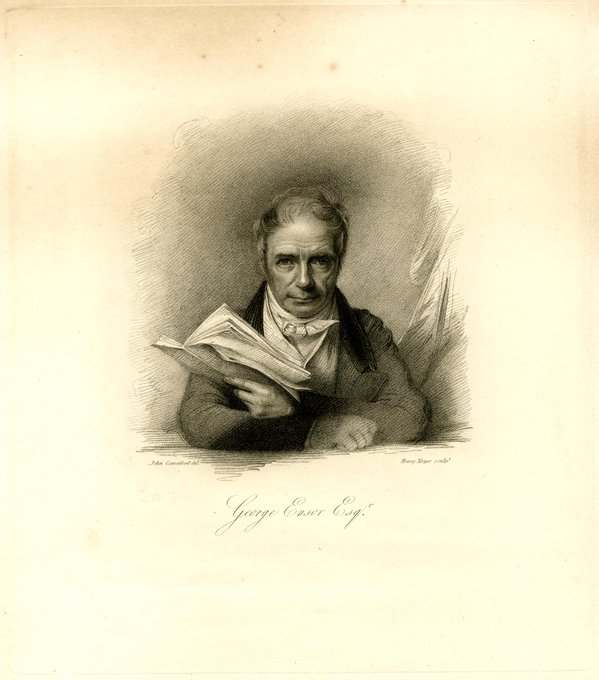'It is impossible to collect the suffrages of all parties; the nature and education and various and clashing interests of men deny it. He who attempts to be a universal favourite will forfeit the respect of all.'
#ConductInAMinisterialCapacity
#19thCentury #Georgian
'I do not advise him to purchase the silence or the support of brawlers; or to pension those diurnal vassals of the press who subsist by their petulance and scandal."
#ConductInAMinisterialCapacity
#19thCentury #Georgian
(Img of George Ensor: British Museum collection)
I've been reading the section 'Conduct in a Ministerial Capacity' from George Ensor's 1806 book 'The Independent Man.'
There's some great (and maybe still relevant?) observations, so I'm going to tweet them under the hashtag #ConductInAMinisterialCapacity.
#georgian #regency
No discussion of Castlereagh portraits would be complete without mention of his many portrayals in political satire of the era. In 1820, George Cruikshank did a stylized portrait of Castlereagh as 'Derry Down Triangle' in Hone's pamphlet 'A Political Lecture on Heads.' 7/
French artist Jean-Baptiste Isabey, often termed the 'official' artist of the Congress of Vienna, did a portrait miniature of Castlereagh in 1814 (L) partly as a study for his much larger official portrayal of the major players at the peace negotiations (R). 6/
About 5 years later, now representing an Irish seat in Britain's House of Commons, Castlereagh was campaigning (ultimately unsuccessfully) to keep his home seat of Down in 1805. An observer did a quick, amateur sketch of Castlereagh (centre) while at a campaign event. 4/
Thomas Lawrence painted his first of 4 portraits of Castlereagh in 1794. The portrait, striking for its dark, drama, shows Castlereagh as a serious young man with a focused gaze at around the time that his parliamentary career was beginning. 2/
#OTD (June 18th) 1769, Robert Stewart, #ViscountCastlereagh is born.
I thought I'd take the opportunity to do a rough chronology of Castlereagh's life in official and unofficial portraiture, starting with a brilliant swagger portrait by Daniel Gardner, done c.1788. (Thread 1/ )
For the last #WellingtonWednesday before Halloween, a ghostly vision.
In Isaac Cruikshank's caricature 'A Vision of Judgement' (c1829), Wellington is haunted by a vision of Charon rowing three ghostly figures across the River Styx (a reference to Dante's 'Inferno').
1/4












